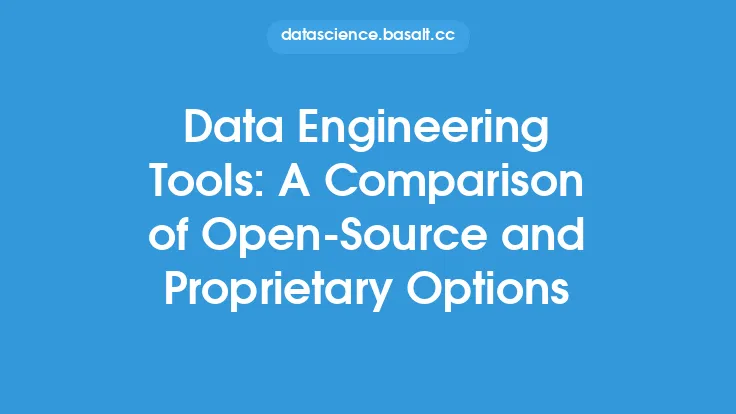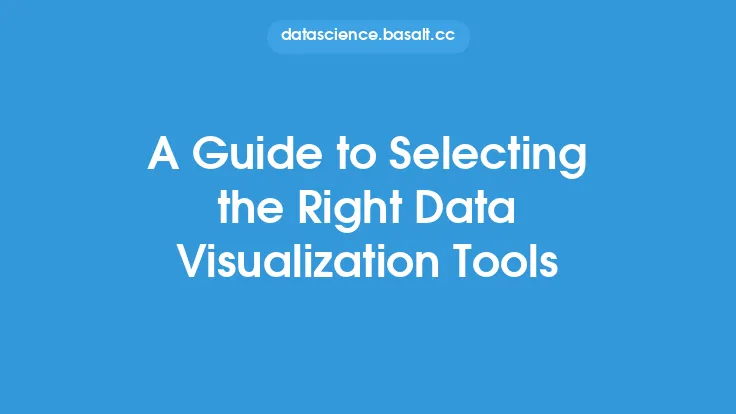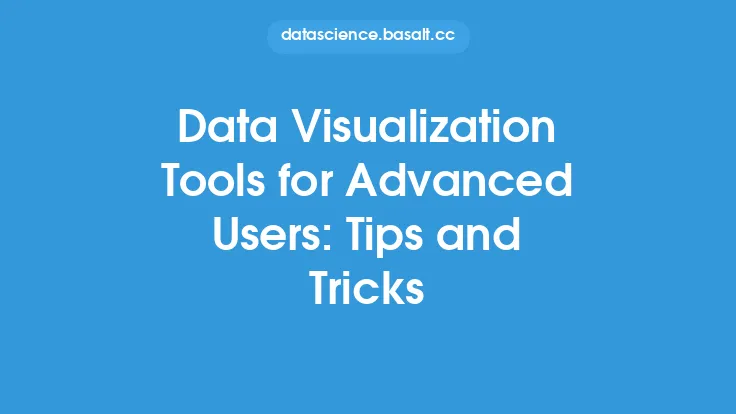Data visualization is a crucial aspect of data analysis, as it enables users to gain insights and understand complex data sets by representing them in a graphical format. With the numerous data visualization tools available in the market, choosing the right one can be overwhelming. In this article, we will delve into the features and pricing of various data visualization tools, providing an in-depth comparison to help users make an informed decision.
Introduction to Data Visualization Tools
Data visualization tools are software applications that enable users to create interactive and dynamic visualizations from their data. These tools provide a wide range of features, including data import, data manipulation, visualization options, and sharing capabilities. The primary goal of data visualization tools is to help users identify trends, patterns, and correlations within their data, and to communicate their findings effectively to others.
Features of Data Visualization Tools
Data visualization tools offer a variety of features that cater to different user needs. Some of the key features to consider include:
- Data connectivity: The ability to connect to various data sources, such as spreadsheets, databases, and cloud storage services.
- Data manipulation: The ability to clean, transform, and manipulate data to prepare it for visualization.
- Visualization options: The range of visualization types available, such as charts, tables, maps, and treemaps.
- Interactivity: The ability to interact with visualizations, such as filtering, drilling down, and hovering over data points.
- Sharing and collaboration: The ability to share visualizations with others, either through export options or real-time collaboration features.
- Security and governance: The level of security and governance provided, such as user authentication, access control, and data encryption.
Pricing Models of Data Visualization Tools
Data visualization tools employ various pricing models, including:
- Subscription-based: A monthly or annual fee is charged, often with tiered pricing plans that offer different features and capabilities.
- Perpetual license: A one-time fee is paid for the software, with optional maintenance and support costs.
- Open-source: The software is free to use, modify, and distribute, with optional paid support and services.
- Freemium: A basic version of the software is offered for free, with paid upgrades for additional features and capabilities.
Comparison of Popular Data Visualization Tools
Some of the most popular data visualization tools include:
- Tableau: A comprehensive data visualization platform that offers advanced features and connectivity options.
- Power BI: A business analytics service by Microsoft that provides interactive visualizations and business intelligence capabilities.
- D3.js: A JavaScript library for producing dynamic, interactive data visualizations in web browsers.
- Matplotlib: A Python plotting library that provides a comprehensive set of visualization tools.
- QlikView: A business intelligence platform that offers data visualization, reporting, and analytics capabilities.
Technical Comparison of Data Visualization Tools
From a technical perspective, data visualization tools can be compared based on their:
- Data processing capabilities: The ability to handle large datasets, perform complex calculations, and provide real-time updates.
- Rendering engines: The technology used to render visualizations, such as SVG, Canvas, or WebGL.
- Browser support: The range of web browsers supported, including desktop and mobile devices.
- Integration with other tools: The ability to integrate with other software applications, such as spreadsheets, databases, and programming languages.
Conclusion
Data visualization tools are essential for gaining insights and understanding complex data sets. With the numerous options available, choosing the right tool can be challenging. By considering the features, pricing models, and technical capabilities of various data visualization tools, users can make an informed decision that meets their specific needs and requirements. Whether you are a data scientist, business analyst, or simply looking to visualize your data, there is a data visualization tool available that can help you achieve your goals.





